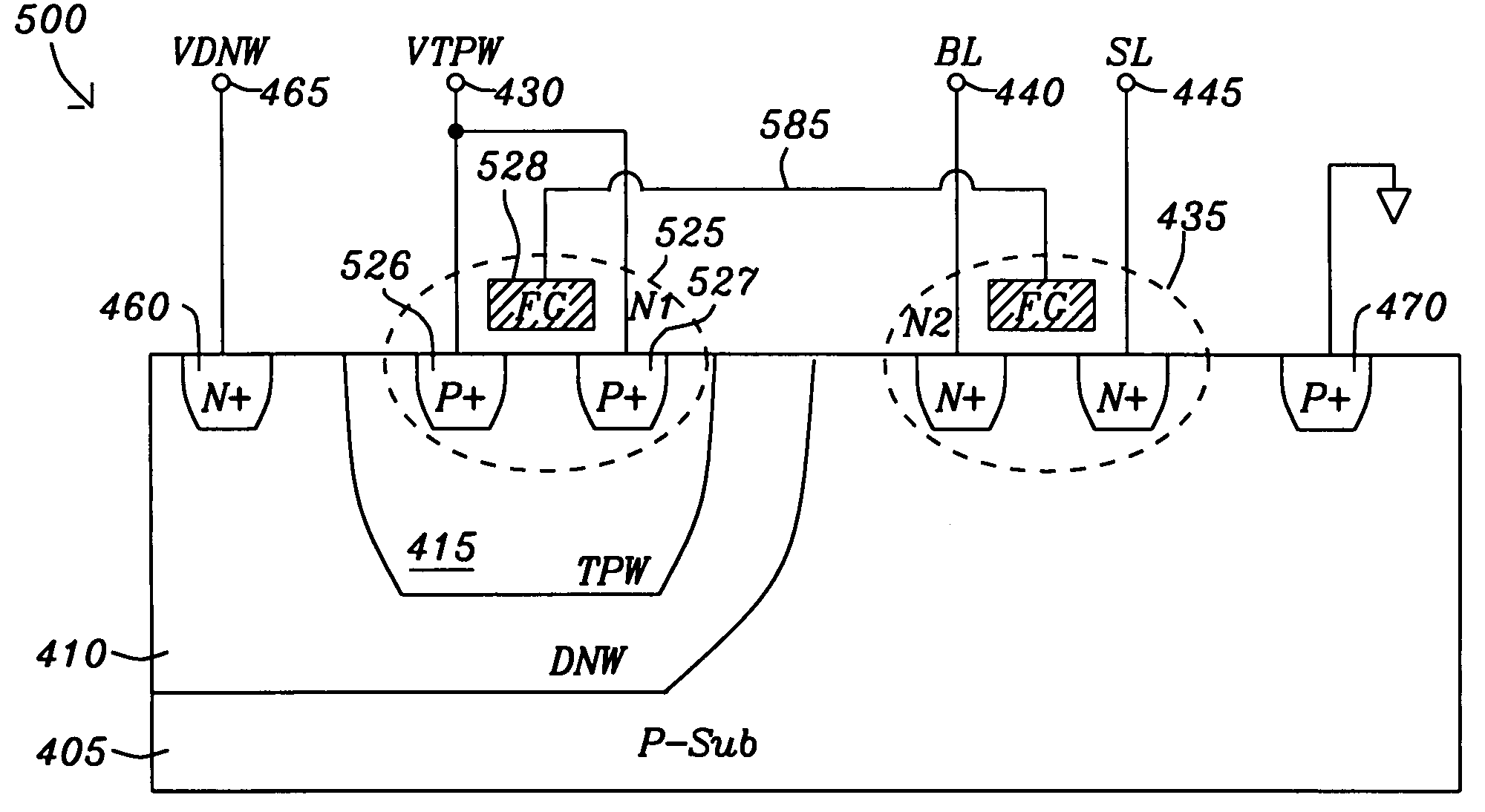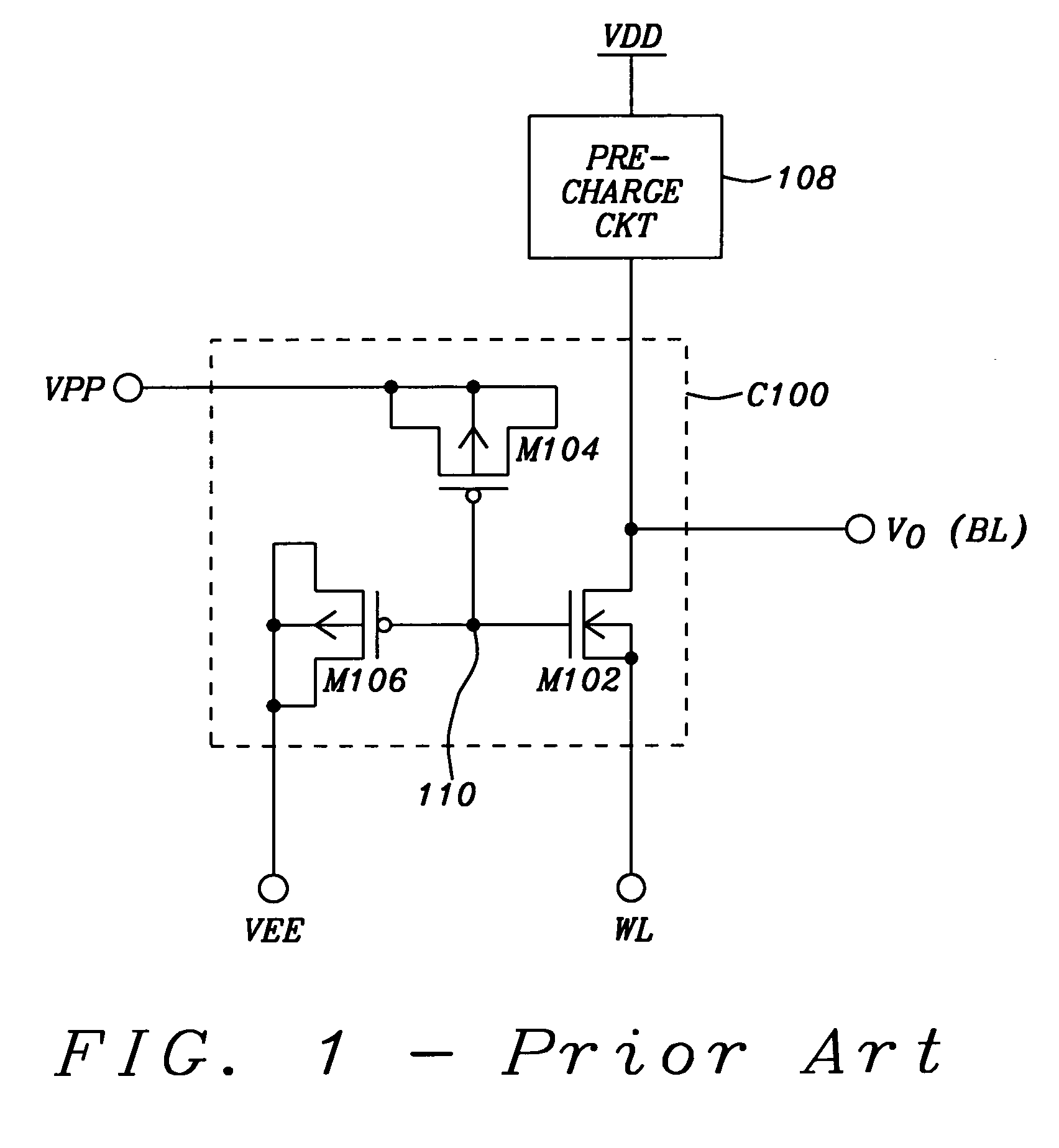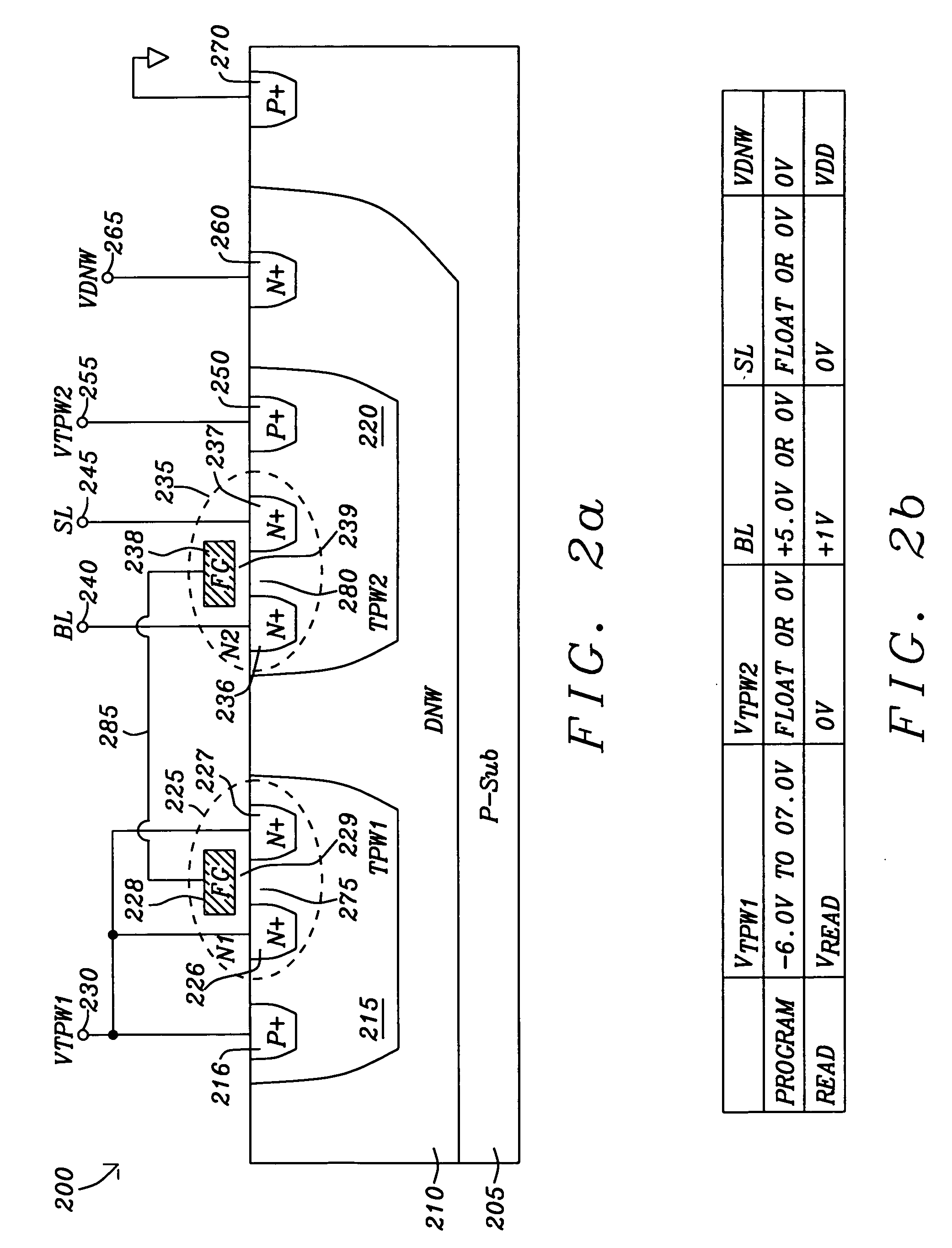Single-polycrystalline silicon electrically erasable and programmable nonvolatile memory device
a nonvolatile memory, single-polycrystalline silicon technology, applied in the direction of digital storage, solid-state devices, instruments, etc., can solve the problems of high voltage breakdown of peripheral devices of nvm arrays, incompatible high-voltage breakdown voltages with current process technology, and high voltage breakdown voltages
- Summary
- Abstract
- Description
- Claims
- Application Information
AI Technical Summary
Benefits of technology
Problems solved by technology
Method used
Image
Examples
Embodiment Construction
[0075]Refer now to FIG. 1 for a description of the schematic diagram of a single polycrystalline silicon floating gate nonvolatile memory cell of Wang et al. Wang et al. provides a single-polycrystalline floating gate one transistor flash cell structure. The NVM cell C100 includes a first programming transistor M106, second programming transistor M104, and storage transistor M102. The pre-charge circuit 108 pre-charges the storage transistor M102 at the beginning of the read operation with a high power supply voltage source VDD. The first programming transistor M106 and the second programming transistor M104 together form the programming element of cell C100. The First programming transistor M106 and the second programming transistor M104 have their gates coupled together and share the floating node 110 with storage transistor M102. A source, a drain, and an n-well terminal of the first programming transistor M106 are coupled together to a first programming voltage VEE. A source, a ...
PUM
 Login to View More
Login to View More Abstract
Description
Claims
Application Information
 Login to View More
Login to View More - R&D
- Intellectual Property
- Life Sciences
- Materials
- Tech Scout
- Unparalleled Data Quality
- Higher Quality Content
- 60% Fewer Hallucinations
Browse by: Latest US Patents, China's latest patents, Technical Efficacy Thesaurus, Application Domain, Technology Topic, Popular Technical Reports.
© 2025 PatSnap. All rights reserved.Legal|Privacy policy|Modern Slavery Act Transparency Statement|Sitemap|About US| Contact US: help@patsnap.com



